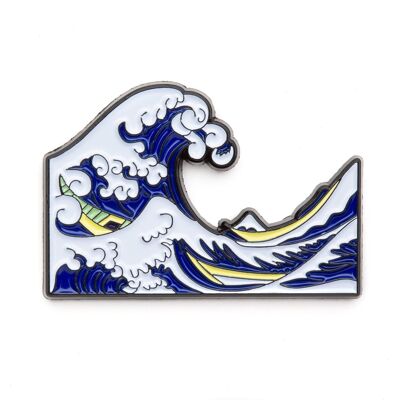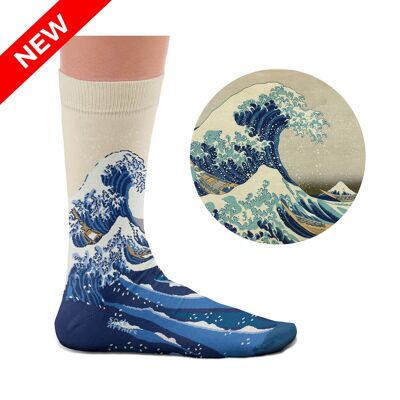


<p><em>The Great Wave off Kanagawa<span> </span></em>by Hokusai</p> <p>Soft Enamel Keychain<br>1.25"<br>5 colors<br>Backer card</p> <p><strong>About<span> </span><em>The Great Wave off Kanagawa<br></em></strong>This is certainly the most recognizable work of Japanese art in the world. Also called<span> </span><em>The Wave</em>, this work by Japanese ukiyo-e artist Katsushika Hokusai is a woodblock print (not a painting). Published between 1829 and 1833, it is the first print in the artist’s series<span> </span><em>Thirty-six Views of Mount Fuji</em>.</p> <p>The image depicts an enormous wave threatening three boats off the coast in the Sagami Bay while Mount Fuji rises in the background.</p> <p><strong>About Hokusai<span> </span><br></strong>Hokusai (born October 1760, Edo [now Tokyo], Japan—died May 10, 1849, Edo) was a Japanese master artist and printmaker of the ukiyo-e (“pictures of the floating world”) school. His early works represent the full spectrum of ukiyo-e art, including single-sheet prints of landscapes and actors, hand paintings, and <em>surimono</em> (“printed things”), such as greetings and announcements. His famous print series “Thirty-six Views of Mount Fuji,” published between 1826 and 1833, marked the summit in the history of the Japanese landscape print.</p>
























